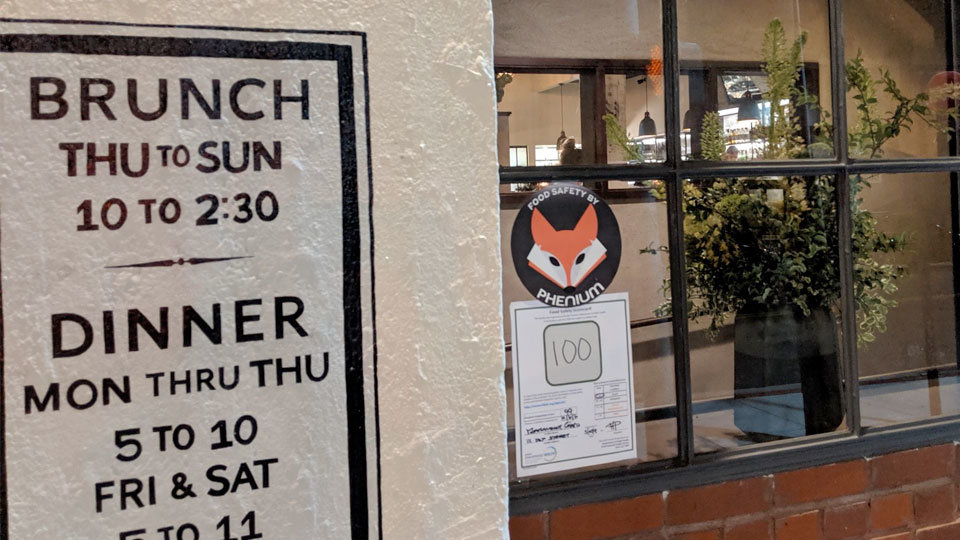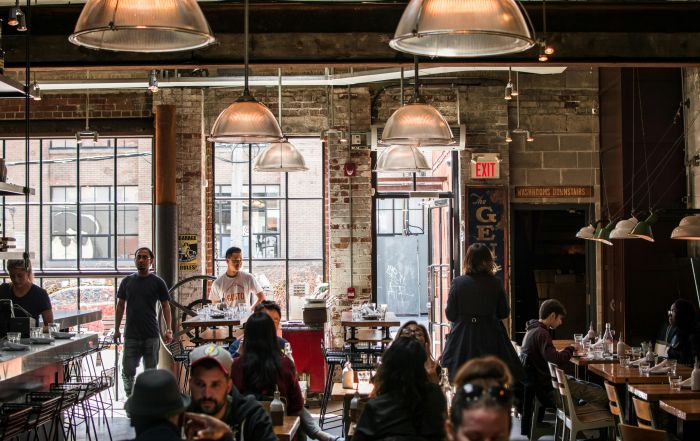Three tips on turning your restaurant’s food safety scores into revenue.
![]() By Matt Bierce
By Matt Bierce

Health scores and reviews can have a large impact on your restaurant’s profits and customers’ purchase intentions.
If you read the first part of our series on transforming food safety and health scoring from a headache into a launchpad for business growth, welcome back! (If not, we encourage you to go get the backstory. It’s a quick read, we promise!)
Here we’re going to explore how you can get out in front of it all by actively managing your social media presence and using food safety technology.
Defuse your reviews
So, where to begin? The number one most important thing is maintaining safe food handling and holding procedures. But you knew that.
Second to that? Social media.
We all “know” the value of maintaining a good reputation but actually reading and replying to online reviews can be a tedious, teeth-clenching and nerve-wracking part of running any business. It’s especially true for restaurants (remember: 62% of eaters look to reviews before making dining decisions). However, those that lean into this new nowhere-to-hide world can build brands that reach a new level of customer loyalty and business success.
And food scores are just the beginning. Thanking customers for positive reviews and showing your appreciation are completely free and easy ways to build upon success and deepen connections with the public. But even a bad review, if handled right, can lead to an increase in traffic.
How? First of all, most people don’t realize it but the sheer volume of reviews can actually drive traffic because the more you have, the higher search engines ranks your pages. That means more people see you and how many customers you’re already attracting. In recap: reviews: don’t fight ’em, invite ‘em!
Secondly, responding to critics with patience and openness shows that you care about customers and are actively engaged in listening to their concerns and building the best business and experience you can. Glance reports that 70% of unhappy customers whose problems are resolved are willing to return. Gotta love those enemies! And you can probably take care of it by spending as little as 15 minutes a day responding to posts.
But reviews aren’t the only way to steer your restaurant’s reputation into more profitable territory. Even little things like posting updates to social media about new menu offerings, new staff, renovations and expansions, business or personal milestones, and even comments about community events show that your restaurant is active, engaged, forward-looking and exciting — all of which increases the chances it will be top of mind for current and potential customers.

Get real about real-time monitoring
OK, all that’s great but none of that reputation management matters if your health score is poor.
HDScores, the company that handles scoring for Yelp, pulls weekly health inspection data from government agencies all around the country. Currently they claim to cover around 73% of the U.S., however since many municipalities don’t regularly release their data, a bad score can stick around way longer than you might think.
The bottom line is that you can’t afford a bad health report, much less an actual full-blown food-borne illness incident.
Getting ahead of it all means finding ways to more closely monitor and more quickly manage health and food safety than ever before. It’s all about going from being reactive to getting proactive with tools that keep you informed of what’s going on across all your locations so you can take immediate corrective actions.
This is the third tip: new technology helps you ace the visits by the health department and it is much easier and more affordable than you thought. Need an idea for simplified, automated and cost-effective food safety monitoring to make sure your health score is high? We might know some folks… ;)

![]() By Matt Bierce
By Matt Bierce


